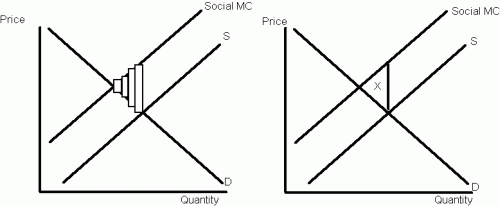Larry Summers, writing in the Washington Post, tells us that:
While the recent decline in energy prices is a good thing in that it has, on balance, raised the incomes of Americans, it has also exacerbated the problem of energy overuse. The benefit of imposing carbon taxes is therefore enhanced.
He might have an argument in mind, but he doesn’t seem to have presented it.
The benefit of carbon taxes, as Summers says, comes from “the recognition that those who use carbon-based fuels or products do not bear all the costs of their actions.” In other words, without a tax, people use more oil than they should. I’m with him so far. Now what Summers appears to be thinking is that when the price of oil falls, people use more oil, which increases the gap between what they do use and what they should use. What this overlooks is that when the price of oil falls, there are increases in both the amount people do use and the amount people should use — and hence no particular reason to believe that the gap has grown.
Having made such an argument, one should draw a picture to make sure it’s right. Here are the demand and supply curves for oil. Points on the demand curve show the value to consumers of individual gallons of oil; points on the supply curve show the cost to producers of supplying those individual gallons; points on the social marginal cost curve show the cost to society (including pollution costs) of supplying those individual gallons:

Ideally, oil would be supplied only up to the point where demand crosses social marginal cost and no further. Unfortunately, it’s supplied up to the point where demand crosses supply. Those excess gallons create social losses measured by the skinny rectangles in the left-hand panel (the social loss from a gallon of oil is equal to the social cost of providing that gallon, minus its value to a consumer). These add up to the area labeled X on the right. The value of an appropriate-sized carbon tax is that we’d avoid that social loss. That is, the benefit of a carbon tax is measured by area X.
Now suppose oil becomes available more cheaply. This shifts both the supply curve and the social marginal cost curve vertically downward by the same amount and shifts area X to a new location. As you can see in the picture, there’s no particular reason to think that the area’s gotten any bigger:

